Restoring a 1976 Triumph Spitfire Part 1
The Acquisition. “I’ll take $2000 for it.” “OK.” So begins the restoration journey of my 1976 Triumph Spitfire 1500. A co-worker had acquired this Spitfire a couple of years earlier, rescuing it from 20+ years of storage, but he had not had the time to work on it and, knowing my interest in and weakness for all things Triumph, he offered it to me.
The restoration of my 1958 Triumph TR3A was approaching its end, and this was an opportunity to continue what had been an enjoyable (most of the time) experience.
The Spitfire in question had always resided in the environs of Southern California, and had last been registered for the road in 1989. A cursory examination indicated that the body and frame were in a remarkably rust-free condition (for a Triumph of this or any vintage).
The odometer indicated only 26k miles, but the condition of the driver’s side carpet and brake pedal wear suggested that at least 100k miles be added to that figure. But overall I considered the Spit a very viable candidate for restoration.
With over 300,000 examples produced, Spitfires are readily available and inexpensive despite the ravages of rust and neglect. The parts availability for these cars from several sources is also very good, which adds to the restoration appeal. Although one should never expect to recoup the investment in restoring these cars, their attractive Italian styling, lively handling and fun factor makes them worthy of the time and treasure invested.
An additional inducement for me was the removable hardtop and the roll-up windows. The open element motoring of the TR3A is great fun, but sometimes a little more refinement is desirable.
So, with the help of a friend and his car trailer, the Delft Blue Spit was soon sitting in my garage. However, due to the time required to complete the restoration of the TR3A and a move from California to Arizona, it was two years before the Spitfire was given a thorough going over and evaluation.
At Home In the California Garage
A Short History of the Spitfire: The Giovanni Michelotti-designed Spitfire first appeared in October 1962 and remained in production through four marks (versions) and numerous changes until 1980.
Produced by British Leyland as a competitor to the Austin-Healey Sprite and MG Midget, the Spitfire was an inexpensive entry-level sports car that also featured an optional removable hardtop, usable trunk, roll-up windows, independent rear suspension and a forward tilting “bonnet” (hood to us Yanks). Neither of the Spit’s competitors had these features. Many also consider the Giovanni Michelotti design to be by far the best of the three.
The Project Assessment
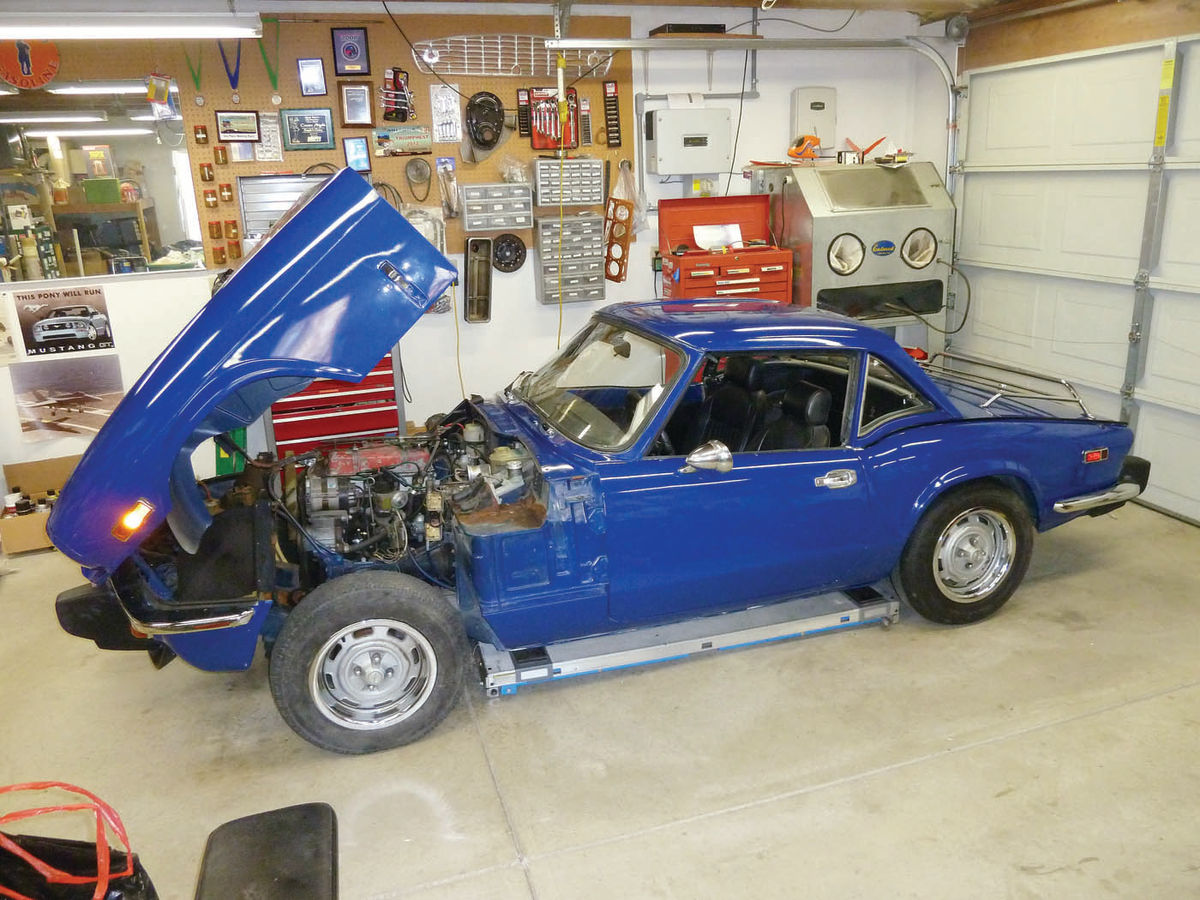
A detailed examination of the Spitfire’s body and frame proved to verify the earlier assessment as they were in excellent condition. The car had obviously been repainted prior to its long years of storage, and the exterior single-stage paint, although not the world’s best, is certainly serviceable with only slight orange peel.
Inside and out only a minimum of surface rust could be found, and was concentrated on the firewall where battery acid and brake fluid had done their usual work of rust-inducing paint removal. The battery box had some small holes that have since been addressed with epoxy and the firewall needed only a thorough cleaning and limited repainting.
All of the glass looked good and the roll-up windows were functional.
The original wiring was still in place and appeared to be in acceptable condition although many of the connectors required replacement due to corrosion. The wiring did present a quandary, though, as much of it was unique to California cars and their smog equipment and so was no longer needed. Do I terminate the excess wires or attempt to replace this harness with one for a Federal car? Which option would entail the fewest problems? That decision will come later.
The Spitfire’s Sad Interior
The interior was in need of a thorough replacement as the carpeting was worn and musty. The vinyl covering the seats was brittle and cracking and the wooden dash was in dire need of refurbishment and/or replacement. (Yes, wood. Good luck finding wood in today’s plastic cars.)
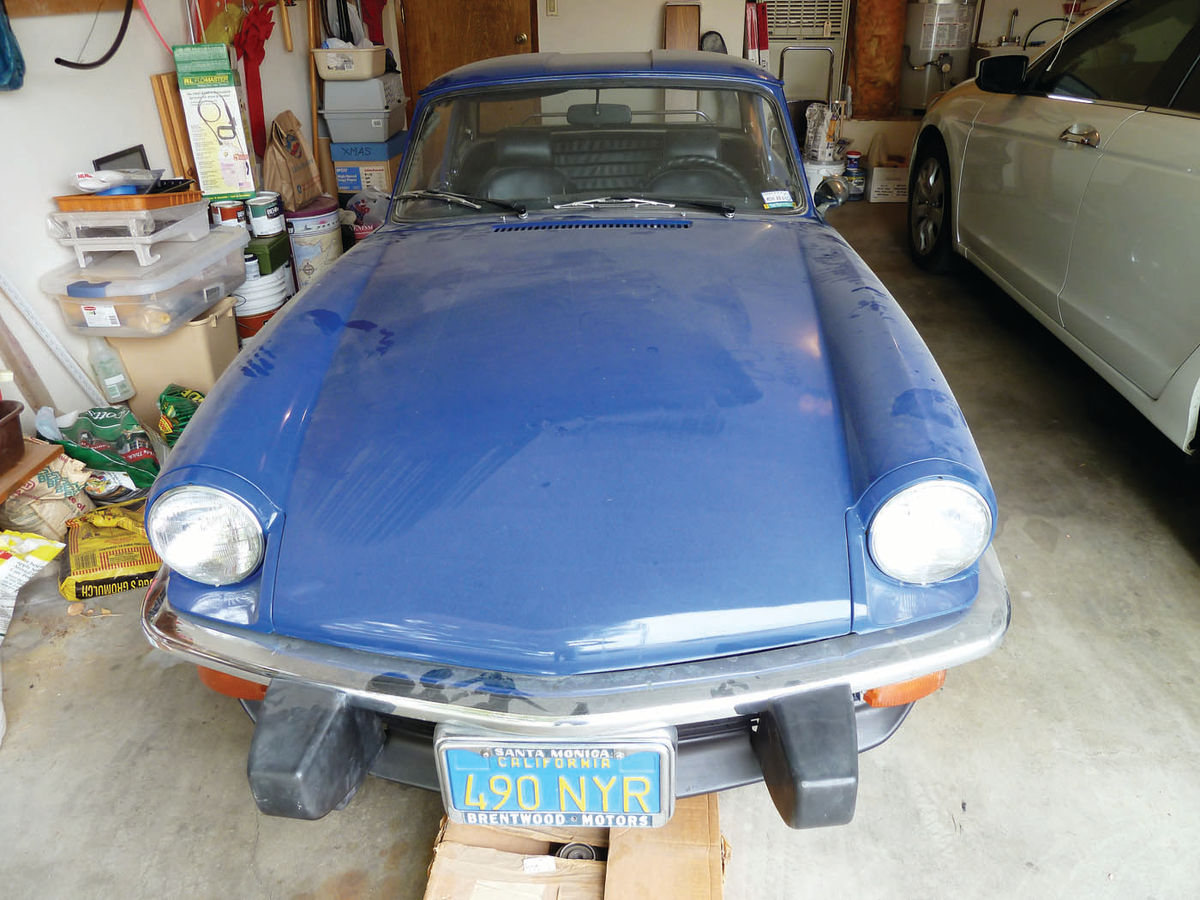
A Pleasant Floor Pan Surprise
Once the ragged carpeting and seats were removed, the floor pans, usually the first place for rot to appear, were almost pristine, requiring only minimal paint touch-up. This could undoubtedly be attributed to not only the car’s lifetime desert location and inside storage, but also to the fact that it is a hardtop, which served to protect it from the elements. The Spit’s frame was in excellent condition.
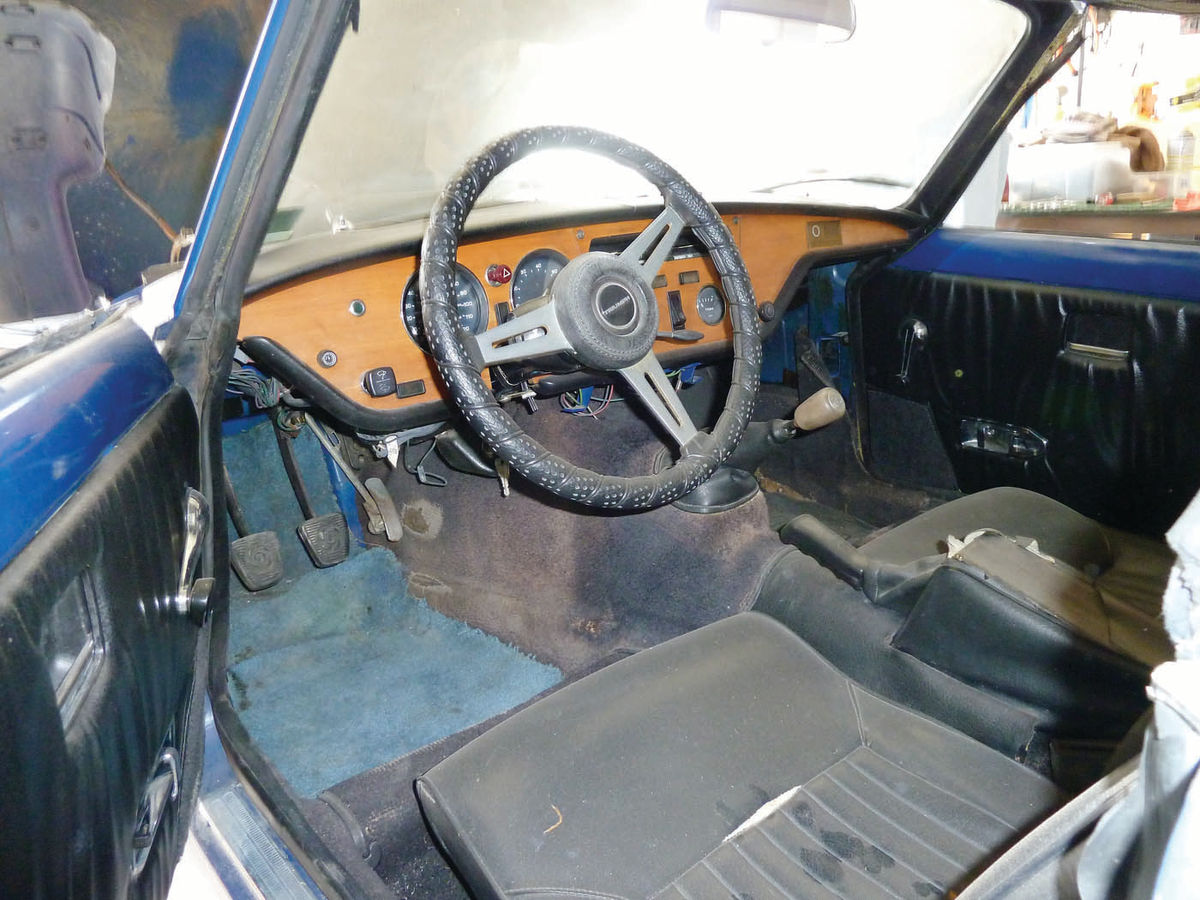
A Not-So-Pleasant Mechanical Inspection
Mechanically, of course, the Spit will require a thorough overhaul, and modifications by previous owners that require remedy are still being found. During the inspection of the interior, the reason for the car’s long years of storage became evident as removal of the transmission tunnel cover revealed a large chunk missing in the transmission bell housing. (Any ideas on how that could have happened would be gratefully appreciated. I don’t have a clue.)
I also found that the hydraulic line to the clutch slave cylinder had a section removed and replaced with a piece of plastic tubing!
Engine removal and partial disassembly also uncovered some issues, hopefully surmountable, that will be covered later. In any case, the Spit has held some not unexpected mechanical surprises, and there can be no doubt that more await.
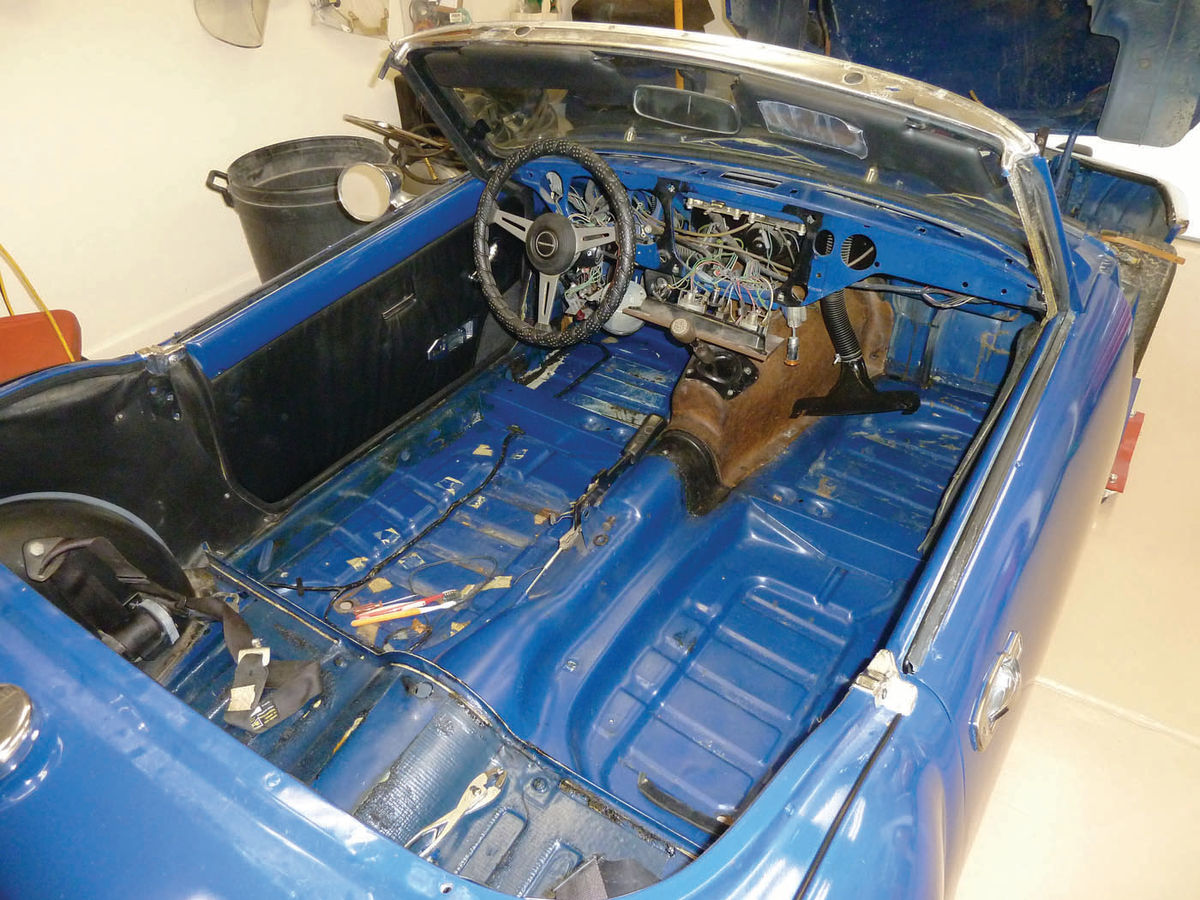
Launching a Plan
In endeavors of this sort, it is important to remember a famous line from Robert Burn’s poem “To a Mouse”: “The best laid schemes o’mice an’ men gang aft a-glay” (or in Standard English, “go often awry”), and even Prussian general Carl von Clausewitz admonishes us in his early 19th-century book “On War” that plans do not survive contact with the enemy. Nowhere are these observations truer than in car restoration, particularly with elderly British sports cars, but it is still important to have a goal and a plan as a guide on how to proceed and allocate limited resources.
The intent for the Spit is to do a body-on-frame restoration of the interior and those mechanical bits that require attention while keeping the car basically as is. There will be some upgrades, however. The 1500cc engine’s rather anemic 57.5 bhp power output (that 0.5 bhp is important when there is only 57 bhp otherwise on tap) will be improved with some compression and induction/carburetion/ exhaust improvements. Some minor suspension upgrades will be included as well. Also, I have enjoyed the 5-speed HVDA Toyota transmission conversion in the TR3A so much that a similar modification will be implemented in the Spitfire.
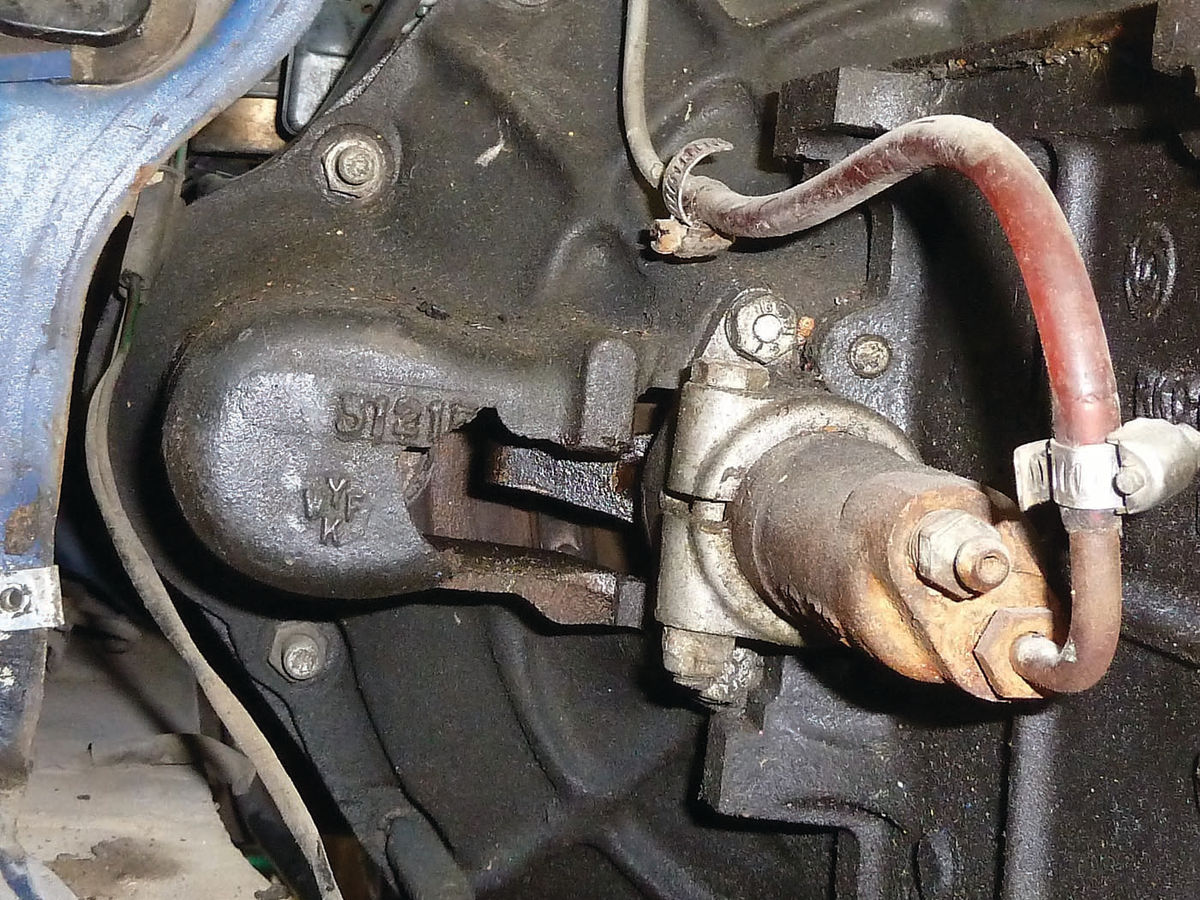
The top-level list includes: 1. Refurbishment of the interior and hardtop headliner. 2. Rebuild/upgrade of the front and rear suspensions. 3. Rebuild of the hydraulic systems to include both the brakes and clutch and their associated master/slave cylinders and hydraulic lines. 4. Cleaning out the fuel tank and replacement of the fuel lines. 5. Rebuild/ upgrade of the 1500cc four-cylinder engine. 6. Replacement of the Triumph four-speed transmission with a Ford T-9 five-speed. 7. Replacement of seals and rubber gaskets as required. 8. Minor paint repair and buffing of the Spit’s exterior.
I am sure that fate has other tasks in store as the Spit gives up its secrets, but that is it for now. The overall goal is to end up with a reliable car that is usable for longer trips, and maybe a few runs at the local autocross events as well.
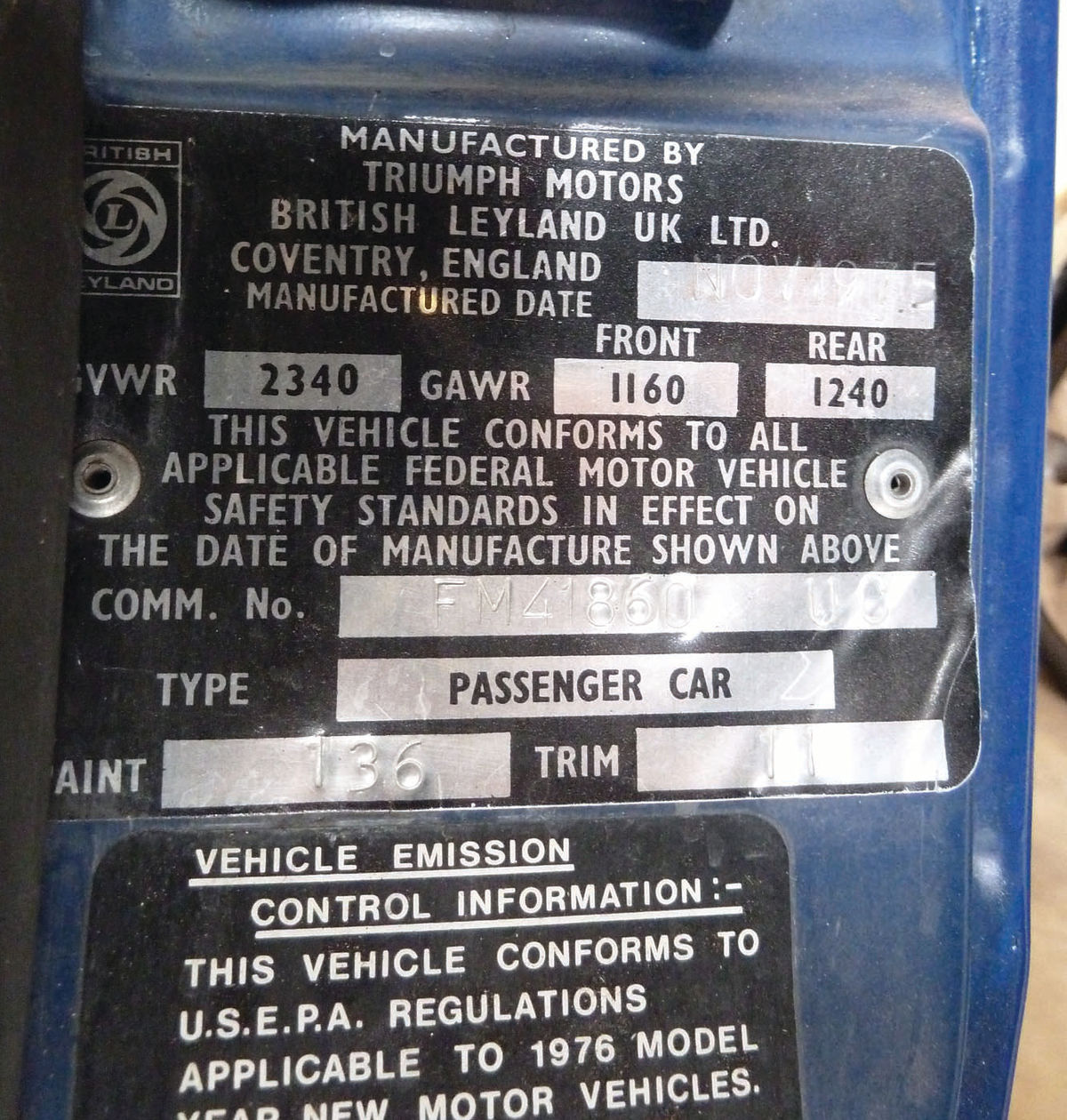
As to schedule, I hope to have the work finished and enough shakedown miles under the wheels to take the Spit to Triumphest at Flagstaff, Arizona, in the fall of 2017.
Now to get started...
















